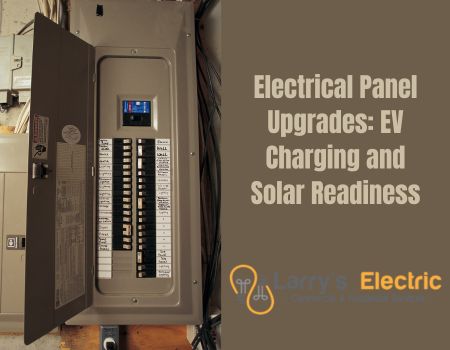If you live in an older home, you’re probably no stranger to flickering lights, tripped breakers, or limited outlet space. While these quirks might seem harmless, they’re actually signals that your home’s electrical system is due for an upgrade. And with more homeowners embracing electric vehicles (EVs), solar panels, and smart home devices, upgrading to a smart electrical panel is no longer just an option—it’s becoming a necessity.
In the past, your electrical panel’s job was simple: distribute power safely throughout the house. But today’s energy demands are far more complex. Between EV chargers, home offices, energy-efficient appliances, and renewable power systems, the average household now consumes and manages electricity in entirely new ways. That’s where smart electrical panels come in.
Understanding the Smart Electrical Panel
A smart electrical panel is a modernized version of the traditional breaker box. Instead of being just a collection of switches, it acts as an intelligent energy hub that gives you real-time visibility and control over your home’s power usage. These panels can track which appliances consume the most electricity, schedule loads to optimize energy efficiency, and even communicate with solar inverters and battery storage systems.
For older homes, many of which were built with 100-amp or 150-amp panels, this upgrade can be transformative. Smart panels are designed to accommodate today’s 200-amp (or higher) service standards, allowing your home to handle the increased load of modern technology without constant tripping or overheating.
Why Old Homes Need an Upgrade
Most houses built before the 1990s were not wired for the kind of energy demand modern living requires. Back then, nobody imagined homeowners would be plugging in cars overnight or generating their own electricity from rooftop solar. As a result, outdated electrical panels often struggle to keep up.
Here are a few telltale signs your panel may need an upgrade:
- Frequent circuit breaker trips or flickering lights
- Burning smell near outlets or the breaker box
- Use of multiple power strips or extension cords
- Limited capacity to add new high-power appliances
- Aluminum wiring or fuses instead of breakers
An upgrade not only increases safety but also positions your home for future energy technologies like EV chargers and solar panels.
Adding EV Charging Capability
Electric vehicles require a dedicated charging circuit, typically 240 volts and between 30 to 60 amps. In an old electrical system, that kind of load can easily overwhelm your existing panel. A smart electrical panel simplifies this by intelligently distributing available power. It can prioritize charging when other loads (like air conditioning or laundry) are low, avoiding the need for an expensive utility service upgrade.
For instance, if you plug in your EV at night while your home’s energy use is minimal, the smart panel automatically directs power to the charger. If another heavy appliance turns on, it adjusts in real time to prevent overloading. Some panels even integrate with smart apps, allowing you to schedule charging during off-peak hours when electricity rates are lower.
Preparing for Solar Readiness
If you’re planning to install solar panels in the future, a smart electrical panel makes integration seamless. Traditional panels often lack the infrastructure to safely connect solar inverters and backup batteries, leading to costly rewiring. Smart panels, on the other hand, are designed to connect directly with renewable systems.
They can:
- Monitor solar generation and household consumption in real time
- Automatically switch between grid and solar power
- Store excess energy efficiently in battery systems
- Provide data insights to optimize energy use
This means that when you finally decide to go solar, your system will plug right into an existing intelligent framework, saving time and money on installation.
The Cost vs. Benefit Perspective
A smart panel upgrade can be expensive depending on your home’s age, panel size, and desired features. While it could be a significant expense, the long-term benefits often outweigh the initial investment.
Here’s what you gain:
- Increased safety and reduced fire risk
- Capacity for EV charging and renewable energy
- Lower energy bills through load management
- Improved resale value for your home
- Real-time monitoring and convenience
In addition, some utilities and state programs offer rebates for energy-efficient electrical upgrades, further reducing your out-of-pocket cost.
Choosing the Right Electrician
Because smart panel upgrades involve high-voltage work and system integration, it’s essential to hire a licensed electrician experienced in modern installations. They’ll assess your home’s wiring, ensure the utility connection meets capacity requirements, and handle any necessary permits.
Before hiring, ask about:
- Compatibility with EV chargers and solar systems
- Brand and warranty details for smart panels
- Potential for future expansion or battery storage
An expert will help you select a setup that’s not just powerful, but scalable.
Final Thoughts
Upgrading to a smart electrical panel is one of the smartest investments you can make for your old home. It bridges the gap between classic architecture and modern living, ensuring your house is safe, efficient, and ready for the future. Whether you’re charging an EV, planning for solar, or simply tired of breaker trips, a smart panel gives your home the upgrade it deserves.
With energy demands only increasing, the question isn’t if you should upgrade, but when.

